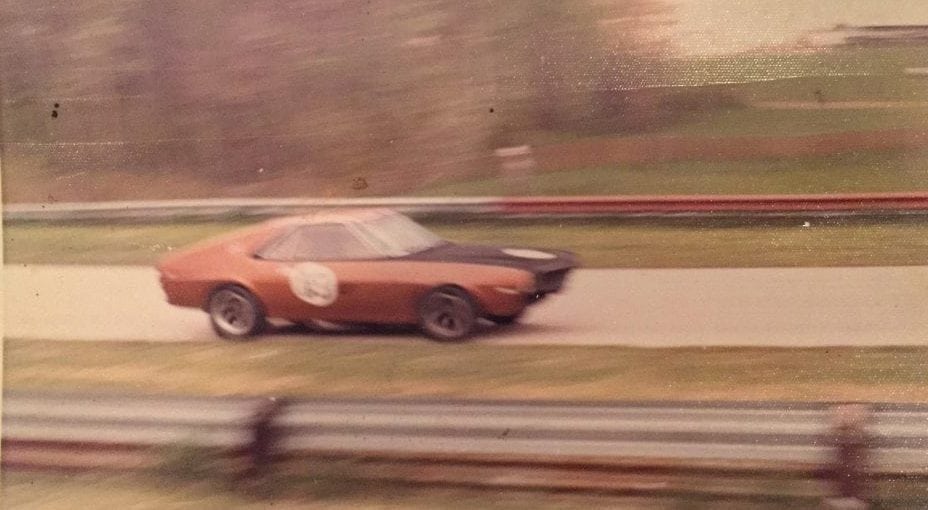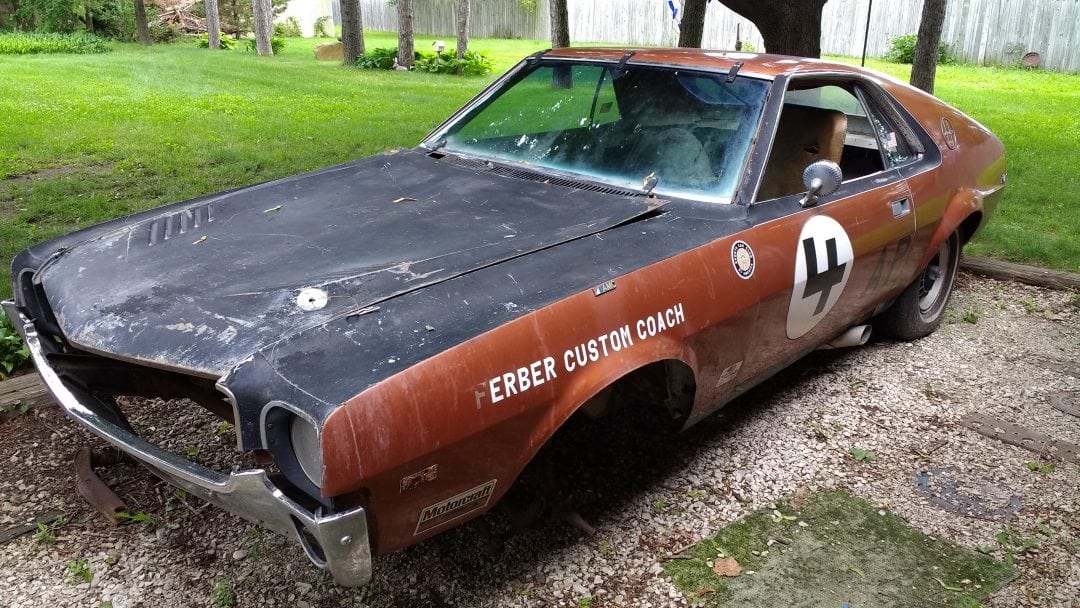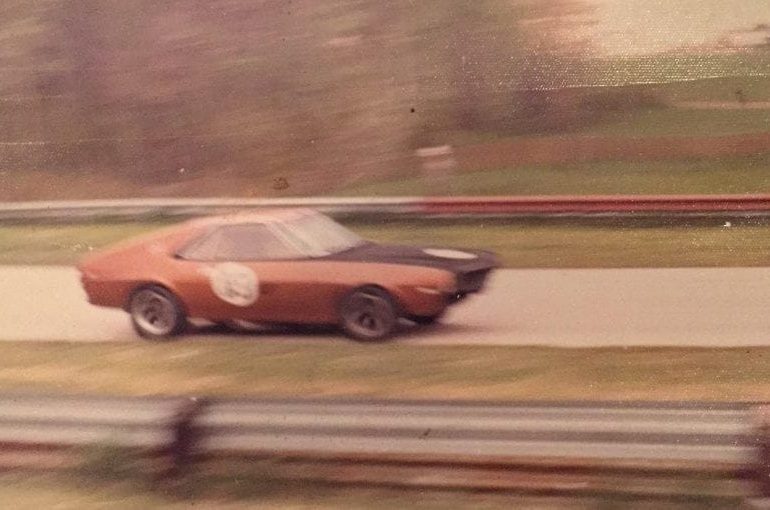It was not my intention for this story to be all about motorhomes. Alas, I may have failed you in this regard. However, please stay alert as I have not let you down completely; for there is a lesson contained within; an important one for the automotive hunter in each of us.
Geoff Hacker of Tampa, Florida is known for many things. He has a PhD in Psychology, is a prolific online college professor, is a world expert in mid-century modern microphones, and has been studying and writing about fiberglass sports cars for much of his adult life. In 2006, for reasons he can’t fully explain, Hacker became fascinated with the Ultravan. What’s an Ultravan, you ask? It’s a truly unique all-American motorhome of the Woodstock era. Designed and constructed as a true monococque without a conventional chassis, the aerodynamic structure came to life courtesy of aircraft designer David Petersen. The flat body panels were of sheet aluminum riveted to supporting aluminum ribs and the curved body components were from fiberglass. To the best knowledge available, 376 Corvair-powered Ultravans were built by Ultra Inc. of Hutchinson, Kansas, between 1966 and 1970. Hacker liberated his first Ultravan, in 2006, dragging it from a swamp near Sebring, Florida, where it had been abandoned some 18 years prior.
Classic & Sports Carfound Hacker’s automotive rescue so intriguing that they chronicled it in the June 2007 issue. Like everything else in his life, Hacker became consumed and fell into Ultravan-mania. This included the rescue of two additional examples (one being the last Ultavan built which Hacker dragged from a junkyard in Alabama) and the creation of an Ultravan song (music following the theme to Spiderman). Of course none of this has anything to do with this month’s hidden racecar but we are inching (yes, only inches) closer.

The Ultravan experience sent Hacker on a 10-year journey researching and acquiring interesting motorhomes and the like, including the audacious pre-war Gougeon Streamliner. In 2016, Hacker stumbled onto and purchased another motorhome, one he could not identify. He recognized the commercial chassis and Y-block engine as Ford and initially theorized the body was an expertly crafted one-off. After significant research he discovered his acquisition was a 1971 Ferber Coach, which was produced in Milwaukee, Wisconsin, and marketed as “The Aristocrat of Motor Homes.” Hacker said, “The Ferber was something very special, fully built from 1/8thinch aluminum. The bottom rear half was not flat but carefully shaped to flow into a flat front, much like a Spanish galleon. Every seam where metal came together was welded and ground flush. Nothing was done in a quick or careless way and every piece was form-fitted together, without a single rivet. Overall, the construction was very interesting and atypical of vehicles of this period.”
Hacker then set about to learn everything he could about the Ferber Coach Company. As is his typical research strategy, he also began working to locate the family and employees who built the vehicles. During the journey, Hacker met Gary Kutzler and learned that Ferber Motor Coaches were designed and built by Bill Ferber who passed away in 2001. Hacker said, “Gary Kutzler was the key to finding the right people and with his help we made contact with, and later traveled to Watertown, Wisconsin, to meet Bill’s son, Larry Ferber, in November of 2016. Larry explained that his father had founded the Ferber Coach Company in the late 1960s. Their business was small and they produced about 15 motor coaches during the seven or eight years they were operational. Each coach was built to special order and took three to six months to construct based on the customer’s specifications. Larry showed me factory photos, brochures, and other items. It was obvious to me that Larry had led a very interesting life working with his father in the RV business. As we walked the property we came upon a Ferber Coach; this was only the second example I’d ever seen. It was 22-feet long and the standard width to accommodate a dual wheel rear axle. Larry told me this Ferber was used as the lead tow vehicle for their racing team. When he said that I had no idea what he was talking about. But very soon I would.”
Hacker continued, “As Larry led me around the abandoned property I followed him into an old barn. There in the middle of the dirt floor was something I had not anticipated. I’m not really that knowledgeable about auto racing, but I immediately recognized the car as an American Motors AMX that had been fully prepped for competition. Larry explained that this car was their company ‘works’ racecar that he had campaigned in SCCA A-Production. This car was a 1969 model equipped with a 390 engine, an automatic transmission, and was not a Go-Pac spec example. Examining the car, I located and photographed the Dash #13014,as well as the door tag which indicated Model #6939-7 (two door coupe), Body #R012518, Trim #396L (Camel Interior), and Paint #79A (Orange). Looking at the car was like gazing into the past as it had been taken off the track, rolled into the family barn, and not moved an inch in decades.” Sadly, two weeks after my visit, Larry passed away.
Networking and blogging Hacker met Wes Aldridge, a Ferber family friend from Muskego, Wisconsin. Aldridge wrote, “The Ferber family lived up the road from us until the early 1970s…I went with him to SCCA races when he raced his AMX a long time ago. Larry was a very good car builder and loved to race cars. We used one of their Ferber Custom Coaches back in the day to take his car to Black Hawk Farms Raceway (Illinois). Larry and his dad were very proud that they were the only company at the time that produced a Class A motor home so strong that they could put glass patio doors in them. I lost track of the family after they moved to Watertown.”
It took Hacker nearly a year to purchase, retrieve and transport the “tow vehicle” Ferber RV to his shop in Tampa, Florida; this now his second Ferber. At some point Hacker met Gary Kielisch of Germantown, Wisconsin, who was a lifelong American Motors fanatic. Kielisch wound up buying the Ferber AMX after Larry’s passing. Hacker later made a deal to buy the AMX racer from Kielisch.

Months later, Richard Brown visited Hacker in Tampa as he was buying an early American VW-powered fiberglass sports car. When Brown saw Hackers Ferber tow RV he simply fell in love. That’s also when Brown learned about the Ferber AMX racecar.
Hacker said, “When Richard Brown heard about the Ferber family AMX racecar he absolutely flipped. By now he was a Ferber fan and he had also done some sports car racing. At that moment, I realized I wasn’t the best custodian for the car; I had zero experience racing and knew I never would. I understood the car belonged back in competition to honor Bill and Larry Ferber. Richard Brown could do that; I couldn’t. Richard was the new owner of the second Ferber, which had towed the AMX racecar. The two vehicles belonged together so I sold the AMX to Mr. Brown. For me, owning a car is fun but there’s nothing more rewarding than finding the builders, hearing their stories, and recording the information so it is captured for future generations. This is what fuels my passion for the hobby and drives all of the work I do.”
Hacker’s Ferber odyssey began with the discovery of an unrelated motorhome. The Ultravan was not a vehicle he was searching for, nor was it something that had ever held his interest. A string of unrelated events led him to discover an historic racing machine.
Our path through this place we call the car hobby is most often unpredictable. You have to be open to what you may learn and what you may find. Open every doorway and have a looksee. Preconceptions kill discovery.




